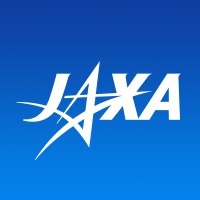
JAXA President Monthly Press Conference
Speech Abstracts by Naoki Okumura, President of JAXA
Date and time: From 1:30 – 2:00 p.m. on March 10 (Fri), 2017
Venue: JAXA Tokyo Office Presentation Room (B1 floor)
MC: Yoshikazu Shoji, Director, Public Affairs Department
JAXA in Comprehensive Agreement with Hokkaido and Tohoku Universities
On March 9, 2017, JAXA, Tohoku University and Hokkaido University made a comprehensive agreement on the use of nanosatellites. The agreement is designed to expand the use of microsatellites released from KIBO, Japanese Experiment Module onboard the International Space Station. As mentioned in my past speech, JAXA has had as one of its priorities the deployment of microsatellites from KIBO and the reinforcement of KIBO’s deployment capabilities. The agreement will meet the demands of Asian regions- JAXA can provide the platform where they discharge their microsatellites. Careful consideration of the Universities’ records of accomplishment and their potentials led JAXA to forming the arrangement. Their academics, infused with JAXA’s experience are expected to promote microsatellite development.
DIWATA-1, the first Philippine microsatellite, approximately 50 kilograms, deployed last April, was coproduced by Hokkaido and Tohoku Universities and the Philippine government. Last November, the two Universities led initiation of AMC, Asian Micro-Satellite Consortium, which comprises of 16 space agencies and universities from 9 Asian countries. AMC is an undertaking through which the Universities activate the use of data collected from microsatellites.
It is JAXA’s earnest desire, through establishing and managing the aforementioned mechanisms, to respond to the needs of the Asia and to contribute to human resources of the area, thus to achieve international development.
On February 23 and 24, I attended GSTC, Global Space Technology Convention, hosted by the Singapore Space and Technology Association. GSTC is an annual convention that Singapore has organized since 2008, making this year’s its 10th. Attendees were space institutions of France and the United Kingdom, and European and North American space industries as well as those from Asia- Japan, Indonesia and the Philippines.
JAXA has not yet had strong relationship with Singapore. Attending GSTC drove me home that there, businesses and university researchers have very high technology and that the country is actively involved in use of outer space. Topics of interest were the entrepreneurial space industry, so-called new space, and the operation of microsatellites, which in my impression match the needs of Singapore’s current economic and social landscape. JAXA will seek to strengthen ties with agencies, corporations and academic institutions of Singapore and other counties to pursue mutual benefit.
This trip included visiting two space-related startups in the country. I found them with excellent technology enters business. If JAXA decides to work with those up-and -coming enterprises, they will turn out to be a great partner, or otherwise a competitor. At any rate, I hope JAXA will cultivate a new frontier for partnership.
Last year, while onboard the International Space Station, JAXA’s astronaut Takuya Onishi ran simple physics experiments, ideas that JAXA had offered to Asian students. The project named Asian Try Zero-G, was filmed and played at GSTC. The Convention provided a platform which makes KIBO missions known to the Asian public. Local Singaporeans seemed to be informed of the missions. JAXA is delighted if GSTC and other functions of similar nature advance its relationship with other Asian nations.
Space Exploration Innovation Hub
JAXA’s Space Exploration Innovation Hub is a rather aggressive operation that aims at application of ground technology in Space with the objective of bringing the benefit back to Earth. Space Exploration Innovation Hub has announced research initiatives to the public twice thus far, and has selected 40 applications. Following are some results of the first group of research applicants.
A team led by Taguchi Industrial Co., Ltd., Japanese manufacturer of construction machine attachments, created a prototype of the mechanic arm synthesized from light metals and CFRP, carbon fiber reinforced polymer. A hydraulic excavator’s CFRP arm weighs a third of its conventional iron counterpart, with excavation performance improvements- the prototype arm can mine higher outputs thus raises productivity, one significant advantage of weight reduction.
Tokyo University of Agriculture and JAXA’s Structures and Advanced Composite Research Unit took part of the project. Application of this technology is construction of space structures with the use of similar machinery, possibly on the Moon in the future.
JAXA informs updates on results that Space Exploration Innovation Hub will continuously yield.
New Gas Sensor to Illustrate JAXA Boosts Japanese Businesses
In an endeavor to ensure autonomy of aerospace exploration, JAXA, in cooperation with Japanese enterprises, initiates domestic research and development of the important components of space structures, which foreign manufacturers currently monopolize and oligopolizes.
I will cite one example of such endeavor.
A spacecraft in flight releases gases from itself. Attachment of the gases on the surfaces of telephoto lenses and other similar apparatus deteriorates the light intensity and beclouds the vision. Minimizing the gas contamination has been one of the top priorities for solar astronomical satellite Hinode and X-ray astronomy satellite Suzaku. Presently, preventive measures that JAXA takes are eliminating the use of volatile materials to the extent possible and killing the gases by preflight baking. Accurate gauging of gases is essential while excitation is in process. However, the sole vendor of the gas sensor is foreign-made and the prices and the functions of their sensor are not satisfactory to JAXA and other Japanese companies. JAXA’s Research and Development Directorate and private partner have therefore sought to produce a new sensor. I hereby announce that Nihon Dempa Kogyo Co., Ltd. and JAXA succeeded in the production of a new sensor with the world’s first system. Refer to the press release to be published shortly for details. The new sensor, once merchandized, will turn out to be highly competitive. Nihon Dempa Kogyo Co., Ltd has the clear vison of engaging in the sale of the sensor. JAXA continues its quest for research and development to foster Japanese technological advancement.
Comments are closed.